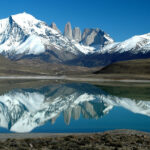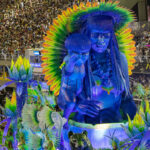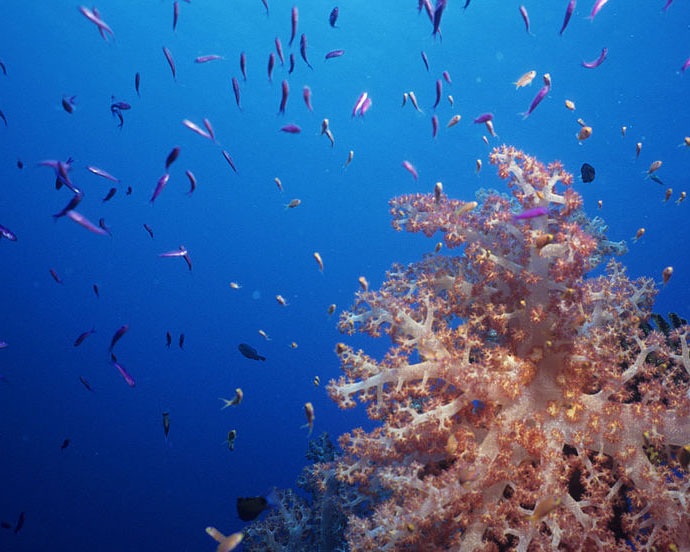Fiji underwater world is a diver’s paradise. The island nation is renowned for its crystal-clear waters and diverse marine life, with a plethora of colorful fish, vibrant corals, and mesmerizing turtles.
Fiji is an island republic in the South Pacific with over 300 islands, each having its own aquatic habitat. Coral reefs encircle the nation, creating a natural barrier for the shoreline and providing home for a variety of aquatic species. Fiji’s seas are a diver’s paradise, with over 1,000 species of fish and over 400 types of coral.
Why is Fiji the World’s Soft Coral Capital?
Fiji is renowned as the “soft coral capital of the world” because of the vast variety of coral that can be seen underwater and is home to a wide range of marine life, including anemones, a variety of colorful exotic fish, sea snakes, and moray eels. The seas surrounding Fiji is home to around 1,200 different reef fish species.
Soft corals vary from hard corals in that they lack a stiff skeleton and may swing in response to currents. They also contain microscopic stinging cells known as nematocysts, which they utilize to catch plankton and other small prey. Soft corals are available in a variety of forms, sizes, and colors, including pink, purple, yellow, orange, and red. Leather corals, sea fans, sea whips, and sea pens are some of the most prevalent soft corals in Fiji.
Because of the nutrient-rich waters that flow across the islands, soft corals flourish in Fiji. The currents provide plankton and oxygen to the corals, allowing them to thrive and breed. The currents also form breathtaking underwater landscapes such as cliffs, pinnacles, canyons, and caves.
Where Can You Dive in Fiji?
Fiji boasts a variety of diving locations to suit all levels of skill and interest. There is a diving location for everyone, whether you want to view sharks, manta rays, turtles, or macro creatures. Here are some of Fiji’s most popular diving sites:
- Manta Reef (Kadavu): This is one of the greatest spots in Fiji to observe manta rays. These delicate giants may grow up to 7 meters wide and glide through the water softly. They are often observed grazing on plankton near the surface or washing themselves at the reef’s cleaning stations. From May through October is the greatest time to observe them.
- Rainbow Reef (Taveuni): This is one of the world’s most colorful reefs. It is situated in the Somosomo Strait, between the islands of Taveuni and Vanua Levu. Soft corals of every color conceivable cover the reef, producing a rainbow impression. A variety of species, including butterflyfish, angelfish, parrotfish, and triggerfish, are drawn to the reef.
- Shark Reef Marine Reserve (Beqa Lagoon): This is one of the world’s most exciting dives. It is a protected location where divers may get up close and personal with several shark species including bull sharks, tiger sharks, lemon sharks, and reef sharks. Experienced guides who assure the safety of both divers and sharks feed the sharks. The dive also contributes to Fiji’s shark conservation efforts.
- Namena Marine Reserve (Savusavu): This is one of Fiji’s and the world’s biggest marine reserves. It has a surface area of 70 square kilometers and preserves a wide variety of marine species, including dolphins, whales, turtles, rays, and fish. The reserve also features some of Fiji’s most pristine coral reefs, having over 400 coral types and 1,100 fish species.
How to Scuba Dive in Fiji
There are several diving operations in Fiji that provide dive tours, lessons, and equipment rental. Depending on your budget and preferences, you may select between liveaboard vessels, resorts, or diving centers. Dives may also be booked online or via a travel agency.
From April through October, the optimum time to dive in Fiji is when the water temperature is approximately 25°C (77°F) and visibility is up to 40 meters (130 feet). Divers may dive all year since the water temperature seldom falls below 22°C (72°F) and visibility is high at 15 to 30 meters (50 to 100 ft).
The diving conditions in Fiji are typically simple and acceptable for both novice and experienced divers. Some diving locations, however, may have strong currents or need deep dives that require additional expertise and abilities.
What to Bring to Fiji for Diving
Here are some items you should carry if you wish to dive in Fiji:
- A current diving certification card as well as a logbook
- Dive insurance that protects against diving accidents
- A dive computer or a wristwatch
- A mask, snorkel, and fins are required.
- A wetsuit or rash guard is recommended.
- A reef-friendly sunscreen
- A GoPro or a camera
- A towel and some clean clothing
If you don’t have or don’t want to carry these goods, you may rent or purchase them from your dive operator.
Divers who wish to discover Fiji’s magnificent underwater environment should visit. Fiji has something for everyone, with its diverse wildlife, gorgeous coral reefs, and incredible marine encounters. Whether you are a novice or an experienced diver, you will discover a dive location that matches your skill level and interests. So, what are you holding out for? Book your diving trip to Fiji now and explore the country’s underwater delights!

Experience the Magic of Patagonia

How Machu Picchu changed the World

Uruguay, a Destination for Digital Nomads






